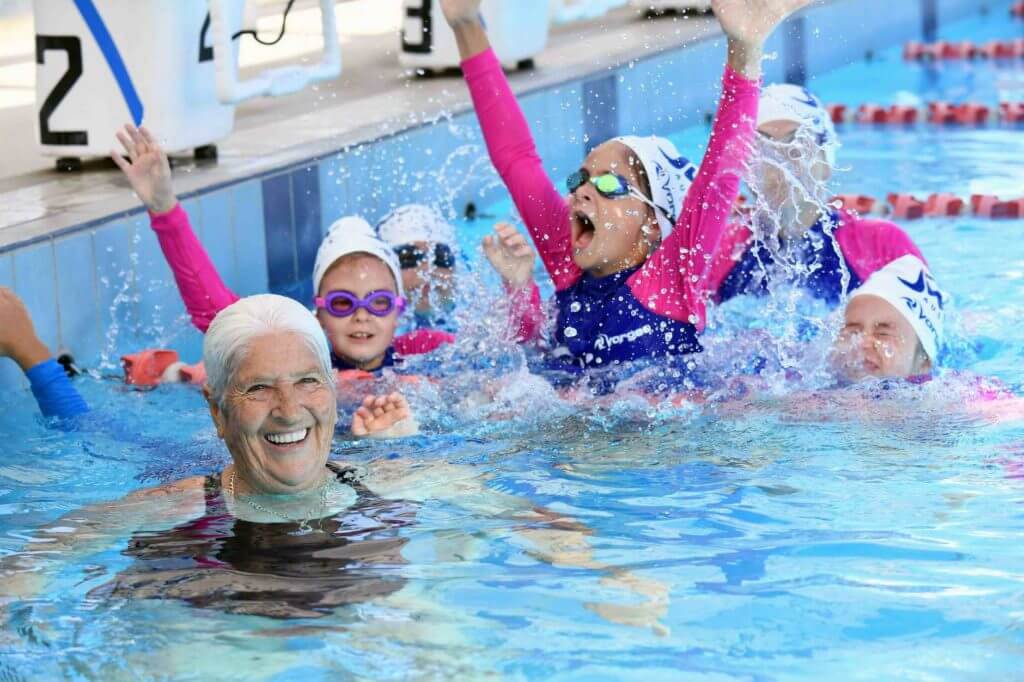How to Draw More Kids Toward the Sport of Swimming

How to Draw More Kids Toward the Sport of Swimming
Swimming is an activity that can benefit people in all sorts of ways and at all ages. As such, there is no better time to begin swimming than in your youthful years. When one learns just how beneficial swimming is for your health, it’s hard not to wonder why more people don’t do it. There are actually many reasons for this, some of which will be unpacked below, but there are also ways to get around these obstacles.
1. Introduce the Activity as a Sport
Young people typically aren’t exposed to the sport of swimming other than maybe the Summer Olympics. Outside of this possible viewing that only occurs every four years (or five), children don’t get to experience how rewarding the sport can be. Swimming is typically cast into the shadows while football, basketball, baseball, and some other sports are portrayed as the best. Although those sports provide lots of excitement and fulfillment to people of all ages, swimming can too! One effective step in drawing kids into swimming could be by simply showing them epic professional races on YouTube or by talking to them about exciting personal swim experiences. Transforming the perception young people have of swimming in a positive direction is certainly a way to make swimming more popular.
2. Minimize Any Possible Fears
When it comes to encouraging children to swim, they may first need to overcome their fear of the water. Many kids have this fear and it’s not just young children as some may expect. Finding ways to help children through these fears is obviously important, and these ways can include turning the swimming experience into a game, swimming for fun rather than out of obligation. One example is switching from swimming in a pool to a lake. There are all sorts of possibilities to add excitement and fun. It can be helpful to reach out to a peer who has had a similar experience working with children or even a professional swim instructor to see what kind of advice they have.
3. Offer Encouragement
As mentioned above, getting into the sport of swimming can be quite a challenge both mentally and physically. Common pitfalls like ice-cold water, water getting up your nose, and leaky goggles can really get in the way of having fun in the water. There will always be tough patches when one swims, and this is especially the case at a beginner level. This is a crucial time to show empathy and to maybe even share similar experiences you’ve had in your aquatic past. It can also help to try incorporating a different activity to ease the mind. No matter what tactic though, it goes a long way to find a method to get out of a negative headspace.
4. Make it Enjoyable
In order to make anything more enjoyable, it can go a long way to experience it with a friend or someone you are comfortable with. One way to draw more kids toward swimming is by having them try it with a buddy. Testing the waters of swimming can be daunting for a child, especially one with no previous exposure to it, but this can be made far easier if done with a friend. This way, both of you can help each other through the process and can even make positive memories.
5. Find Ways To Make It More Accessible For All
One of the downsides of swimming is that it requires a pool, which isn’t exactly as accessible as running, where you can slip on your shoes and go outside. The harsh reality here is that swimming isn’t something that everybody has access to and this is an issue when it comes to drawing more children toward the sport. Not only are pools not physically available for everybody’s use, but even pools that are present aren’t always affordable for use. Although this is a complicated obstacle to overcome, there are ways to make swimming more accessible. Day camps for children could include swim lessons as an option for campers. Going beyond this, organizations and facilities that include pools can do giveaways including free swim lessons and cool swimming gear, both of which build excitement and enthusiasm. Finally, fundraising and volunteering with kids free of charge can help close the accessibility gap.
All commentaries are the opinion of the author and do not necessarily reflect the views of Swimming World Magazine nor its staff.



